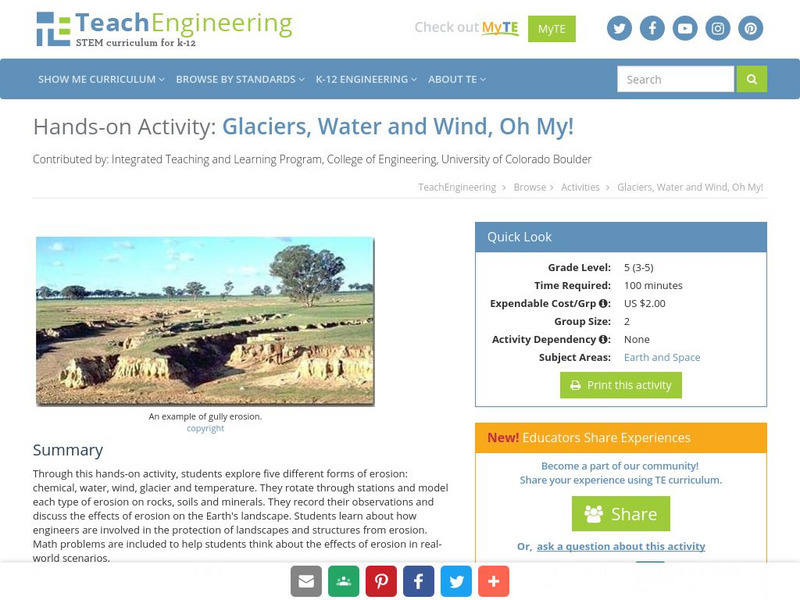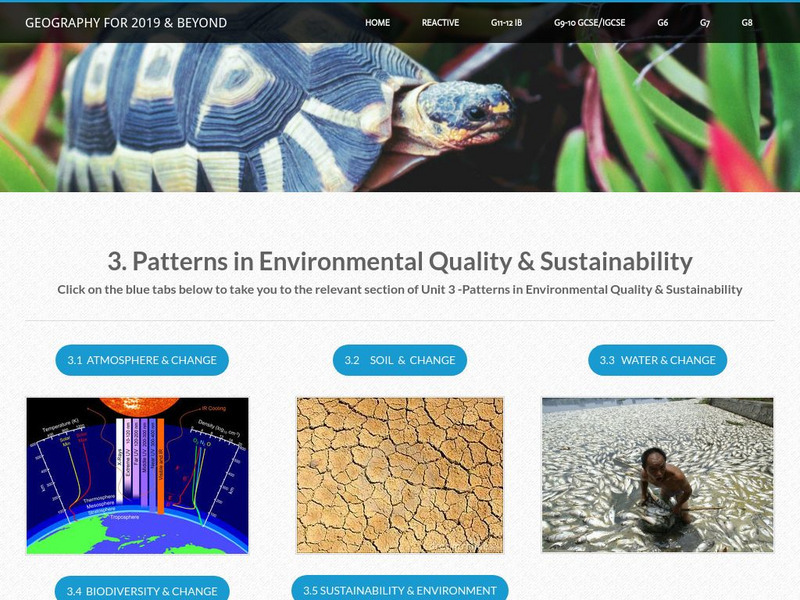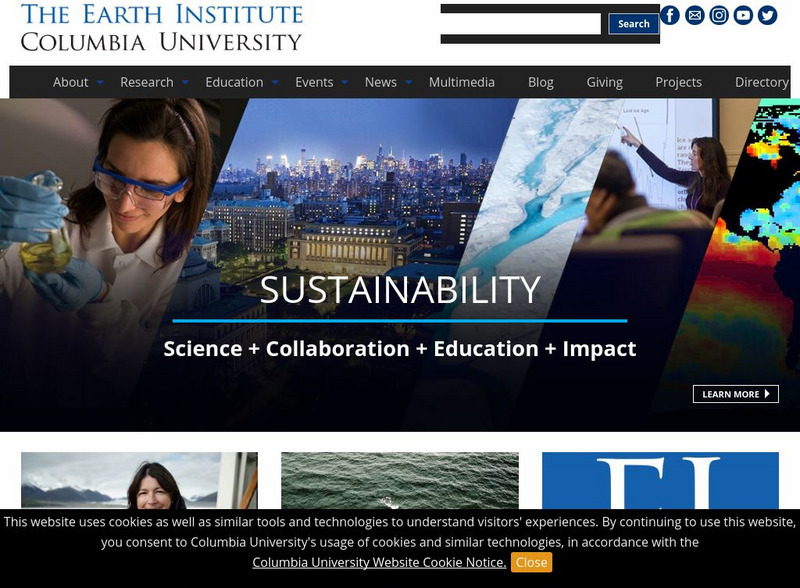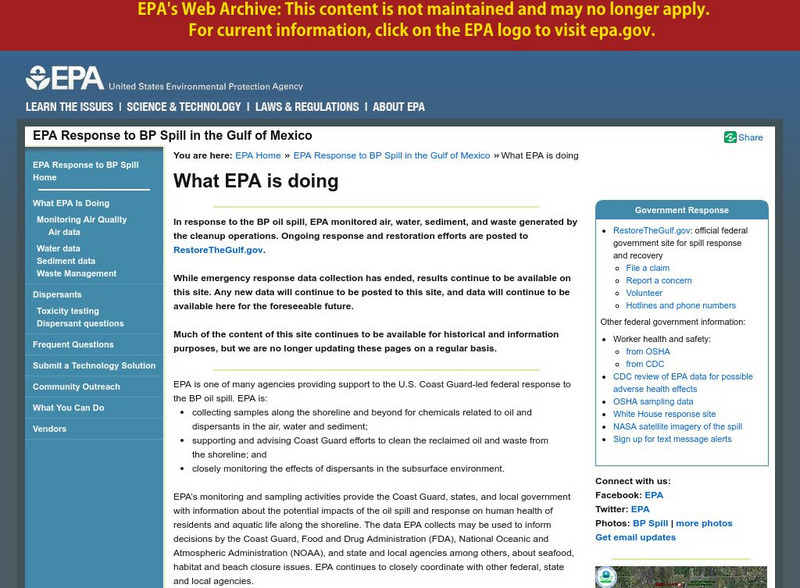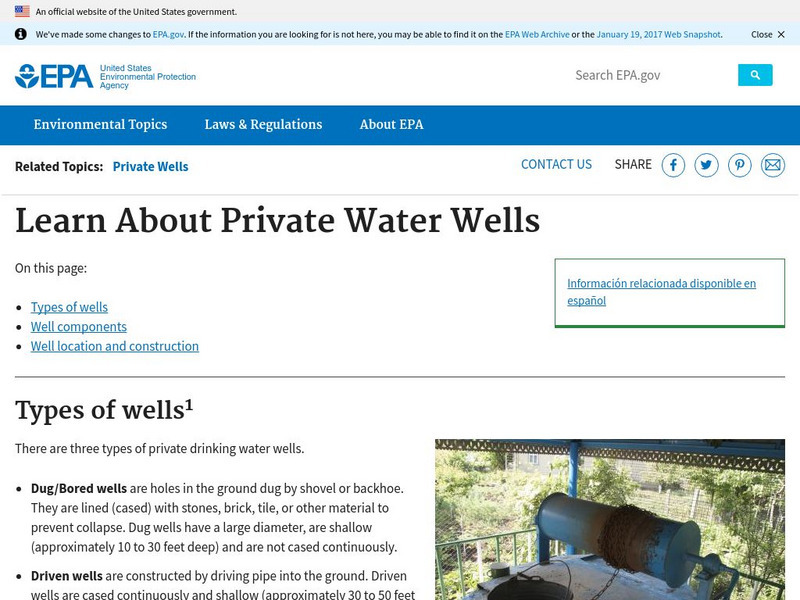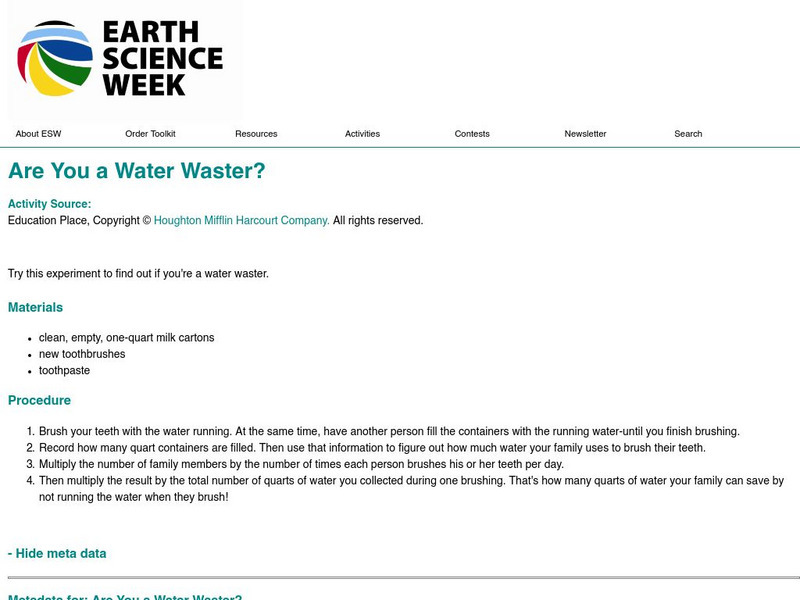US National Archives
Docsteach: Birth of the Environmental Protection Agency (Epa)
By the late 1960s, issues of unchecked land development, urban decay, and air, noise, and water pollution came to Americans' attention. In November 1971, the newly created Environmental Protection Agency (EPA) announced a large-scale...
Other
National Environmental Education Foundation
Provides environmental education on subjects including health and wellness, water purity, Public Lands Day, and environmental business concerns.
Science Education Resource Center at Carleton College
Serc: Epa's Environmental Education Center
A collection of fact sheets, brochures, and web pages about environmental issues. Topics include acid rain and air pollution, ecosystems, human health, waste and recycling, conservation, and water-related concepts and issues.
US Environmental Protection Agency
Epa: Water on Tap: What You Need to Know
Downloadable booklets with basic information about the U.S. water supply, e.g., where our drinking water comes from.
US Environmental Protection Agency
Epa: Ground Water and Drinking Water
Learn about the safety of drinking water, find information on agencies that oversee our water, and gain access to the current drinking water standards and regulations.
Independence Hall Association
U.s. History: Environmental Reform
Environmental awareness in the United States became more focused upon the publication of Rachel Carson's Silent Spring. Read about student protests, presidential legislation, and a new desire to protect the environment.
Texas Commission on Environmental Quality
Tceq: Lesson Plans & Resources for Teaching Environmental Sciences [Pdf]
A large collection of lesson plans on environmental topics. The lessons are broken up into the broad categories of air, water, and waste, and look at issues around quality, pollution, conservation, and recycling. There are activities for...
US Department of Agriculture
China's Agricultural Water Policy Reforms [Pdf]
"This report documents the problem of water scarcity in parts of northern China and describes China's agricultural water management policies as well as reforms underway to encourage water conservation." (USDA) (PDF Format)
TeachEngineering
Teach Engineering: Glaciers, Water and Wind, Oh My!
This hands-on activity explores five different forms of erosion (chemical, water, wind, glacier and temperature). Students rotate through stations and model each type of erosion on rocks, soils and minerals. The students record their...
Other
Earth Day Network: Conserving Water Through Art [Pdf]
A lesson challenging students to develop ways to conserve water in their homes after understanding the impact of water scarcity. A promise will be made by each student and a reminder craft created to help them keep the promises.
TeachEngineering
Teach Engineering: Natural and Urban "Stormwater" Water Cycle Models
Students apply their understanding of the natural water cycle and the urban stormwater water cycle, as well as the processes involved in both cycles to hypothesize how the flow of water is affected by altering precipitation.
Science Education Resource Center at Carleton College
Serc: Michigan Environmental Education Curriculum Module Index
Series of self-guided tutorials covers the topics of water quality, ecosystems, biodiversity, and energy sources including a summary of important concepts as well as a glossary.
Other
Florida Department of Environmental Protection: Life in a Spring
Learn all about the diverse species that live in the Florida Springs. Separate sections for fish, reptiles and amphibians, birds and mammals, insects and invertebrates, and plants.
National Institutes of Health
National Institute of Environmental Health Services: Lead Buster Club
This resource is an interactive simulation that will challenge you to find sources of lead in your environment.
Geographypods
Geographypods: Patterns in Environmental Quality and Sustainability
This collection of five learning modules looks at issues related to environmental change and sustainability. Topics addressed include changes in the atmosphere, soil, water, and biodiversity, and what can be done to counteract this and...
Other
Icpdr: Ships and Environment to Share Danube River
This is a comprehensive analysis of the importance of the Danube River Basin and ways to balance human and ecological needs in the basin. The reason behind this study is the European Union's move to open shipping lanes in the Danube and...
Columbia University
The Earth Institute at Columbia University
Bringing people together to discuss Earth's environmental problems, The Earth Institute addresses climate change, environmental degradation, poverty, disease, and sustainable use of resources.
US Environmental Protection Agency
Epa: Our Responsibilities Under the Safe Drinking Water Act
This 1975 article describes the legislation that was passed to regulate the safety of drinking water.
US Environmental Protection Agency
Epa: Epa Response to Bp Spill in the Gulf of Mexico
Get the facts about what the U.S. Environmental Protection Agency is doing in response to the BP oil spill in the Gulf of Mexico.
US Environmental Protection Agency
Epa: Extramural Research Science Topics
This EPA website has links to many science topics about which the Environmental Protection Agency has concerns.
US Environmental Protection Agency
Epa: Private Drinking Water Wells
Provides information on what to do after a flood to protect well water from contamination, the testing of private well water, and protecting private well water.
National Institutes of Health
National Institute of Environmental Health Sciences: Let's Talk About Water
Discover why water is so important, especially clean water. Find out where water comes from and how we can make it safe to drink and free from pollution.
US Environmental Protection Agency
Epa: Summary of the Clean Water Act
Provides a brief overview of the Clean Water Act. Includes links to its history and to information about compliance and enforcement.
American Geosciences Institute
American Geosciences Institute: Earth Science Week: Are You a Water Waster?
In this activity, students monitor how much water is used if the water is left running while they brush their teeth. They use that information to calculate how much the whole family would use. They learn how much water can be conserved...

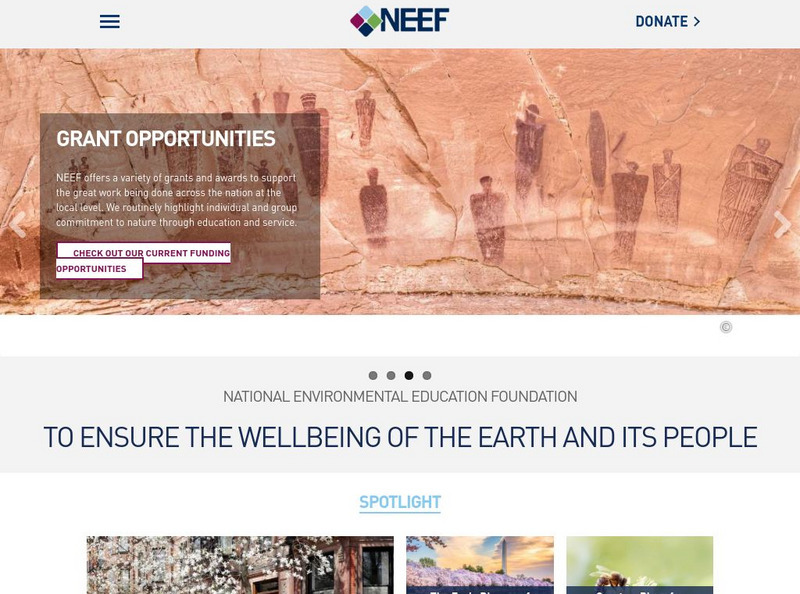


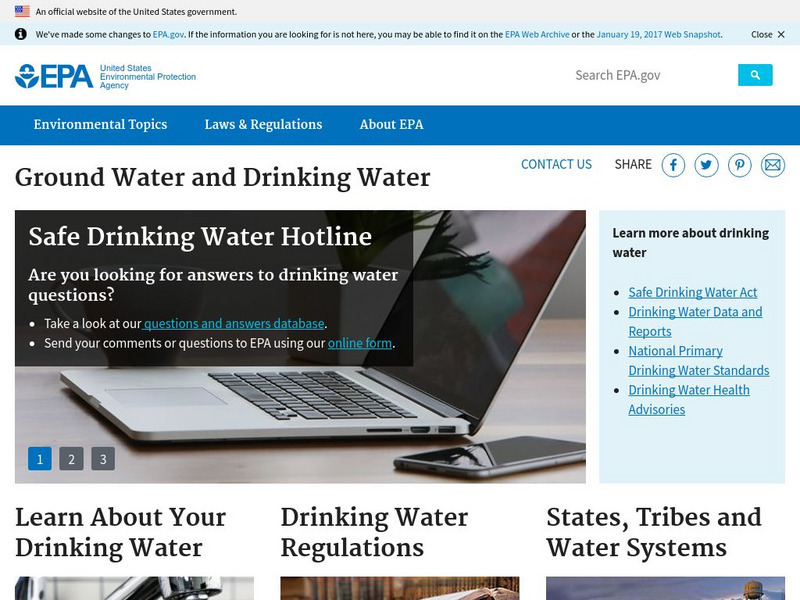

![Tceq: Lesson Plans & Resources for Teaching Environmental Sciences [Pdf] Lesson Plan Tceq: Lesson Plans & Resources for Teaching Environmental Sciences [Pdf] Lesson Plan](https://d15y2dacu3jp90.cloudfront.net/images/attachment_defaults/resource/large/FPO-knovation.png)
